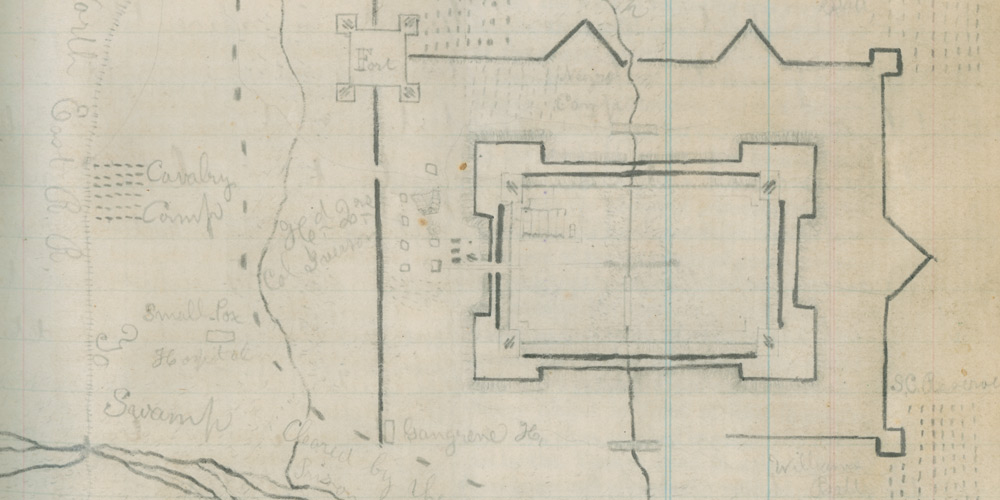About The Florence Stockade
Construction began on the Florence Stockade on September 12, 1864. The prison was in operation for approximately five months, from September 1864 through February 1865, and held more than 13,000 prisoners.
The stockade was built by the Confederate Army amidst the fear that Sherman’s forces marching through Georgia would free Union soldiers being held at Andersonville prison. Florence was chosen as the location of the prison because local railroads would provide easy transportation of prisoners and supplies.
The stockade sat on approximately 23 acres of land and was situated on Pye Branch, a small tributary of Jeffries Creek. The walls of the prison were 12-16 feet tall. To keep prisoners from trying to dig out, a deep trench was dug around the outer stockade walls.
Conditions at the camp rapidly declined due to dwindling supplies and overcrowding. Severely sick and injured prisoners were paroled due to public criticism. At its worst, camp death rates ranged between 20 and 30 a day.
By January 1865, the number of prisoners dropped to 7,500 and the death rate decreased. After several exchanges the Florence Stockade was completely empty of prisoners by March 1865.
In order to bury the prisoners who died in the Florence Stockade, trenches were dug at the nearby plantation of Dr. James Jarrott. There were two burial sites. One contained more than 400 remains and the larger burial site of 16 trenches contained 2,300 remains.
The larger burial site was established as the Florence National Cemetery in 1865. The remains from the smaller burial site were later reinterred into the national cemetery.
150 Years Later
Designs for the new Veterans Affairs building are nearing completion. This building was inspired by architecture contemporary to that of the Stockade and will be located at the corner of South Gaillard Street and National Cemetery road. The new facility will create a dynamic environment for those visiting the National Cemetery and the Stockade.







